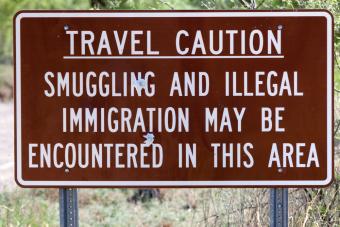Smuggling & Trafficking
Smuggling & Trafficking
Recent Activity
Video, Audio
February 7, 2014
This panel discussion offers perspectives on border policy management from leading officials in the Canadian, Mexican, and U.S. governments, and showcases the MPI book, "Managing Borders in an Increasingly Borderless World."
Reports
February 2014
This report, based on an undercover exposé of Punjabi visa agencies by The Sunday Times, sketches one immigration loophole into Europe: so-called “donkey flights” by which Indian migrants obtain a tourist visa for a Schengen-zone country in order to enter the United Kingdom through the back door. Thousands of visa agencies operate in the Punjab region alone, with varying degrees of legality, some having links to criminal smuggling networks across Europe.










